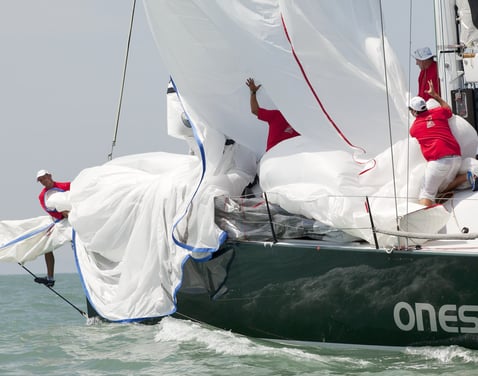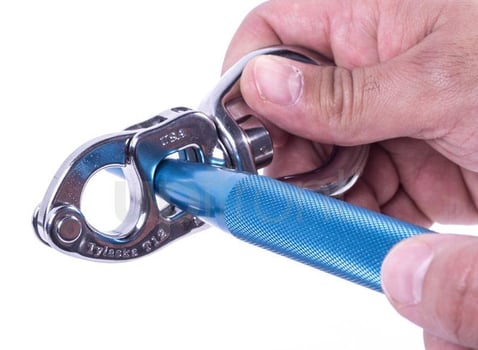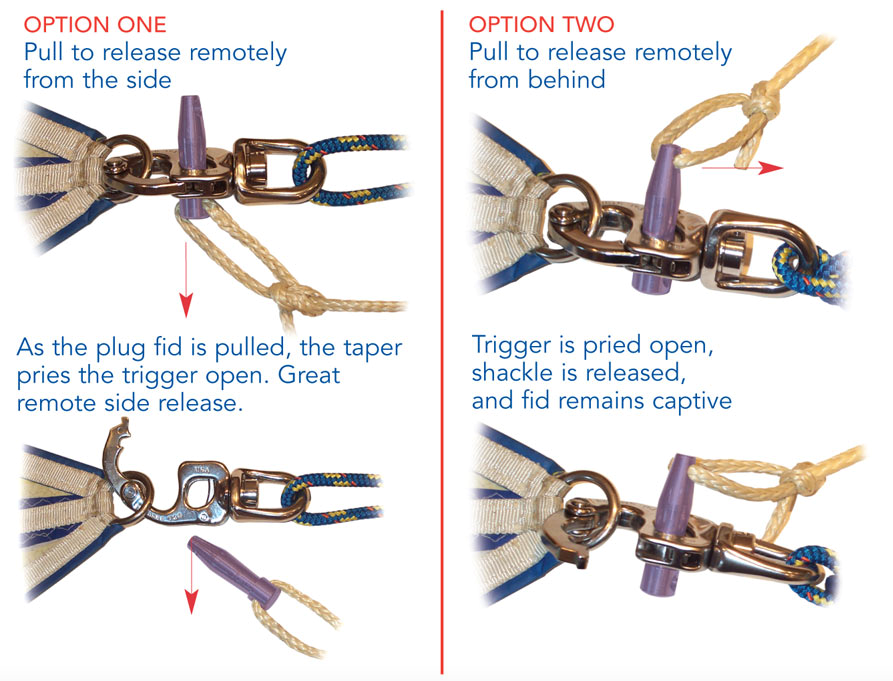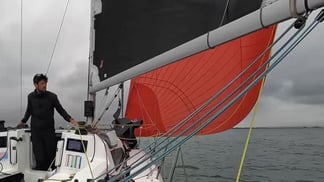
What is a Martin Breaker?
The term Martin Breaker refers to a shackle tripping device to allow for remote release of a tack line under load during a spinnaker drop. There are a multitude of possible configurations and, like many things in sailing, the optimal setup will depend on the boat, the crew and a good bit of trial and error. In this blog we aim to give a general overview of some of the things to look out for.
Etymology of Martin Breaker
We are familiar with the name Jack appearing in sailing terminology (Jackstay, Lazyjack etc), but ‘Martin’ is not common. The term Martin Breaker is widely used in racing circuits but perhaps less well known in the wider sailing community. It certainly doesn’t seem to be a ye-olde nautical term that has filtered down through the generations. So where does it originate? Surely Google, the fountain of all knowledge, will provide the answer. But no! A quick scour of the web does not reveal a conclusive etymology. Digging a bit further, discussions of remote release mechanisms can be found on several forums, sometimes with reference to the term Martin Breaker. Although the term might not be in universal lexicon, its validity is bolstered by appearing in the hardware offerings of manufacturers Tylaska and KZ.
Sailing Anarchy member ‘Platty’ offers the most convincing explanation on a forum post from 2006, stating that the tack release mechanism is named after ejection seat manufacturer Martin Baker. Is that so? It certainly seems plausible.
Blowing the Tack
Tripping the tack shackle under load is a popular method for initiating a spinnaker drop. Releasing the tack immediately depowers the kite and without the tackline attached there is nothing to slow down or hinder the process. Once the tack has gone, the kite can then be hauled down by a drop-line or the lazy sheet.
One option to release the shackle is to ‘spike’ it by hand. This usually involves the bow-person shimmying out to the end of the sprit and hanging on with one arm while jamming a spike into the shackle trigger with the other.

The alternative method is to rig a shackle release mechanism which is connected to a piece of Dyneema and led aft so the shackle can be tripped remotely. This is particularly useful for short-handed sailing where there are simply not enough people to leave one clinging to the end of the sprit during a drop.
The Trip Mechanism
Rigging a trip mechanism is a balance between making something that will release reliably but without being so sensitive that it can be triggered inadvertently.
Plug and Cone Fids
Tylaska produce a range of small fids which are designed specifically to trigger their snap shackles remotely. A full explanation can be found in our blog: Tylaska Cone and Plug Fids Explained

Once primed, plug fids are probably the most sensitive option and will trigger easily. Hence they are also the most likely to trigger accidentally if knocked. Cone fids are less sensitive.
Remote Release Shackle
A recent addition to the Tylaska offering is a slight variation on the traditional snap shackle which includes 4m of thin Dyneema led through the spindle and connected to the trigger release.
This video from Tylaska shows more detail:

A dedicated remote release shackle like this is arguably the neatest solution. However, these are not currently widely available and incur a price hike of nearly 40% compared to the standard version.
Basic is Often Best
The 3rd option is perhaps the simplest and easiest to implement. Simply pass a small soft shackle or loop of thin Dyneema through the snap shackle trigger. The release line can then be corrected to this loop. Alternatively, pass a longer piece of Dyneema directly through the shackle so it forms a 2:1 with at least one end lead back to the foredeck.
This option is cheap to implement and can work with any trigger style snap shackle as long as the release mechanism is not too stiff. This is perhaps the least sensitive and care should be taken to ensure the release line passes across the correct end of the trigger, away from the pivot point.
Rigging a Martin Breaker
Whichever trip mechanism you choose, you then need to lead the release line back to the foredeck. Unless using a fid which is activated by pulling at right angles to the shackle, the release line should normally run parallel to the tackline to be most reliable. Run the release line through the bowsprit fitting and terminate on the foredeck. The length of the release line depends a little on personal preference but should always have enough slack to allow for movement of the tackline through stretch or settling in the clutch. The release line can be made long enough so that the tack shackle can be brought back to the pulpit.
Once the release line is terminated, simply blow the tackline from the cockpit. The tackline runs free until the Martin Breaker snatches tight and trips the shackle. After the kite drop, remember to go forwards and collect the tackline which is now swinging freely off the end of the sprit.


Spend some time practicing in manageable wind conditions to ensure you have an effective and reliable setup. A Martin Breaker can easily become a hazard if it trips inadvertently or worse still, won’t trip when you need it to. But a well configured system can lead to clean and straightforward shorthanded kite drops. Super light winds can actually cause the most problems if there is not enough pressure in the kite to trip the shackle. A sharp tug on the foot of the kite will normally do the job.
Summary
The ejector seat of spinnaker drops, a Martin Breaker allows for remote triggering of your tack shackle to instantly depower the kite for the takedown. As with any critical piece of kit, it is worth spending the time in practice and setup to get a good configuration that works for your boat and crew. A well configured Martin Breaker will work 95% of the time and lead to clean, effective, low-stress drops. This can be a particularly good option for short handed sailors.
If you have any questions about these products, please feel free to contact us by mail at support@upffront.com, or click the link below:




